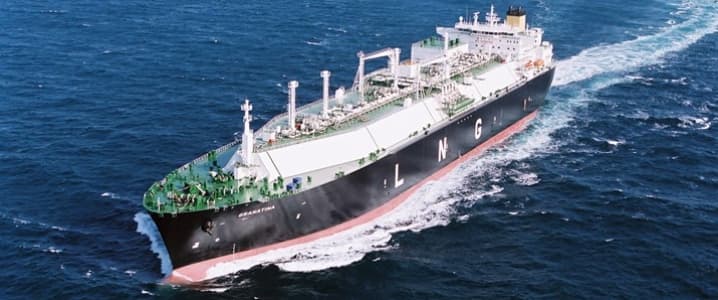While U.S. LNG looks set to be competitive in 2017, reaching export markets in Latin America and East Asia, a significant source of competition will be Australia, the other Pacific natural gas powerhouse. With billions invested in new production and export facilities, the Down Under energy producer looks ready to take advantage of conditions in 2017, if all goes according to plan, before new restrictions and slowing investment hold back further export growth.
Australian LNG exports are expected to be much higher in 2017, with Platts reporting the Australian government raising its export forecast for the new year, from 51.5 million to 52.4 million metric tons. Exports for the following year are forecast at 67.3 million mt. The country’s existing export capacity is expected to reach 87 million metric tons by mid-2018. This equates to an anticipated growth of forty-two percent in 2017 and twenty-eight percent the following year, according the quarterly report.
With vast mining and extractive industries, Australia is currently set to enjoy a commodities boom. The Department of Industry, in its quarterly report, forecast resource and energy exports to reach record levels, rising by thirty-percent to $US204 billion in 2017 and holding steady at that level for at least another year.
This is good news for the country’s mining, oil and gas industries, which had suffered a decline in export earnings: from 2013 to 2015, the total value of resource exports fell from $US190 billion to less than $US160 billion, largely due to falls in prices. Now prices are back up, with iron ore, the country’s main export earner, climbing to $US80 a ton from a low of $US38 last year.
Thermal coal prices are also way up, in part due to announced cuts in coal production in China. Thermal coal has doubled to over $US100 a ton, with coking coal tripling in price. Spot prices for coking coal were especially strong, at one point reaching more than $US120 higher than the contract price, due to the Chinese decision and various production interruptions in 2016. That rally has now slackened, with prices tumbling back down in late 2016. Credit Suisse now estimates that coking coal will average $US194 in 2017 before falling to $US145 in 2018. Related: Will U.S. Shale Soon Be Getting A $50 Billion Cash Injection?
Declines in the price of coal will be matched by a slowdown in the country’s current LNG boom. Both Platts and the Australian government is bearish where exports after 2018 are concerned, with growth slowing and LNG exports reaching 72 million mt in 2018. The reasons are slowing demand in the major energy markets of East Asia, restarting nuclear power plants in Japan and increased competition from renewables, as well as a downturn in the exploration and discovery rate among Australia’s fields.
A major reason for the anticipated slowdown is the end of a recent trend of “mega projects” in Australian LNG, most of which are nearing completion or already operating. After a few false starts, Chevron’s huge Gorgon facility in West Australia was fully operational in mid-2016. Its production for the year stands at 1.98 Million mt, and Platts expects it to reach 11.95 million mt in 2017.
When natural gas prices hit record highs several years ago, a frenzy of construction set off in the Pacific, with billions invested in “mega projects.” LNG is typically sold in long-term contracts, many of which were signed in this heyday of LNG anticipation. Now, expectations are a bit more moderate. Woodside Petroleum, a major Australian oil and gas firm, invested heavily in major projects. Yet its latest, the Browse LNG project, has been cancelled and its senior officials are calling an end to the “mega project” era, citing an oversupplied LNG market and uncertain demand. Related: Oil Majors Prepare For Mega Tender In Lebanese Levant Basin
Investment in major energy projects is expected to slacken in the next few years, with the Australian Department of Industry anticipating only $25 billion in new projects to be underway in 2020. This is down from expectations of $50 billion just a year ago, a clear sign that excitement over Australia’s commodities export potential is tapering off.
So, while conditions for Australian LNG are good for the moment, with growth looking strong for 2017 and potentially 2018, long-term prospects for the country’s LNG export capacity don’t look quite as attractive as they once did.
ADVERTISEMENT
By Gregory Brew for Oilprice.com
More Top Reads From Oilprice.com:
- Russia Has Started Cutting Oil Output: Kremlin
- Oil Prices Running Out Of Reasons To Rally
- The Secrets Behind Russia’s 2016 Oil Success


















